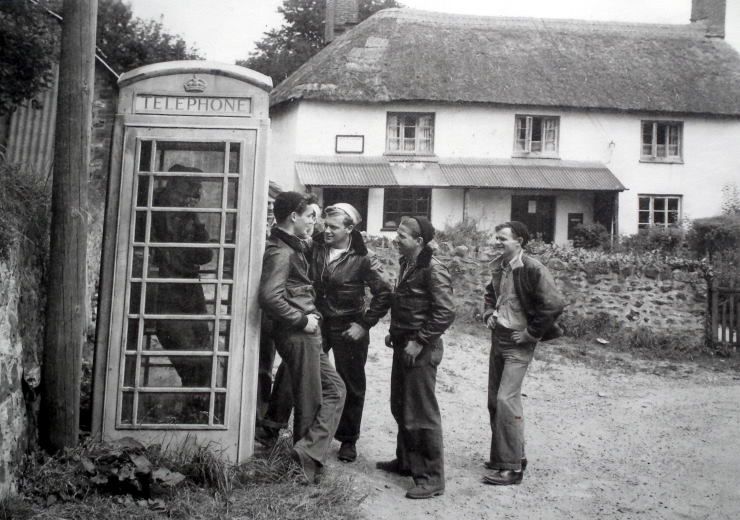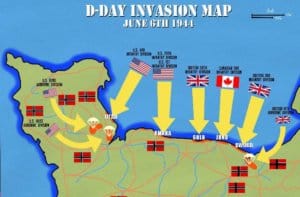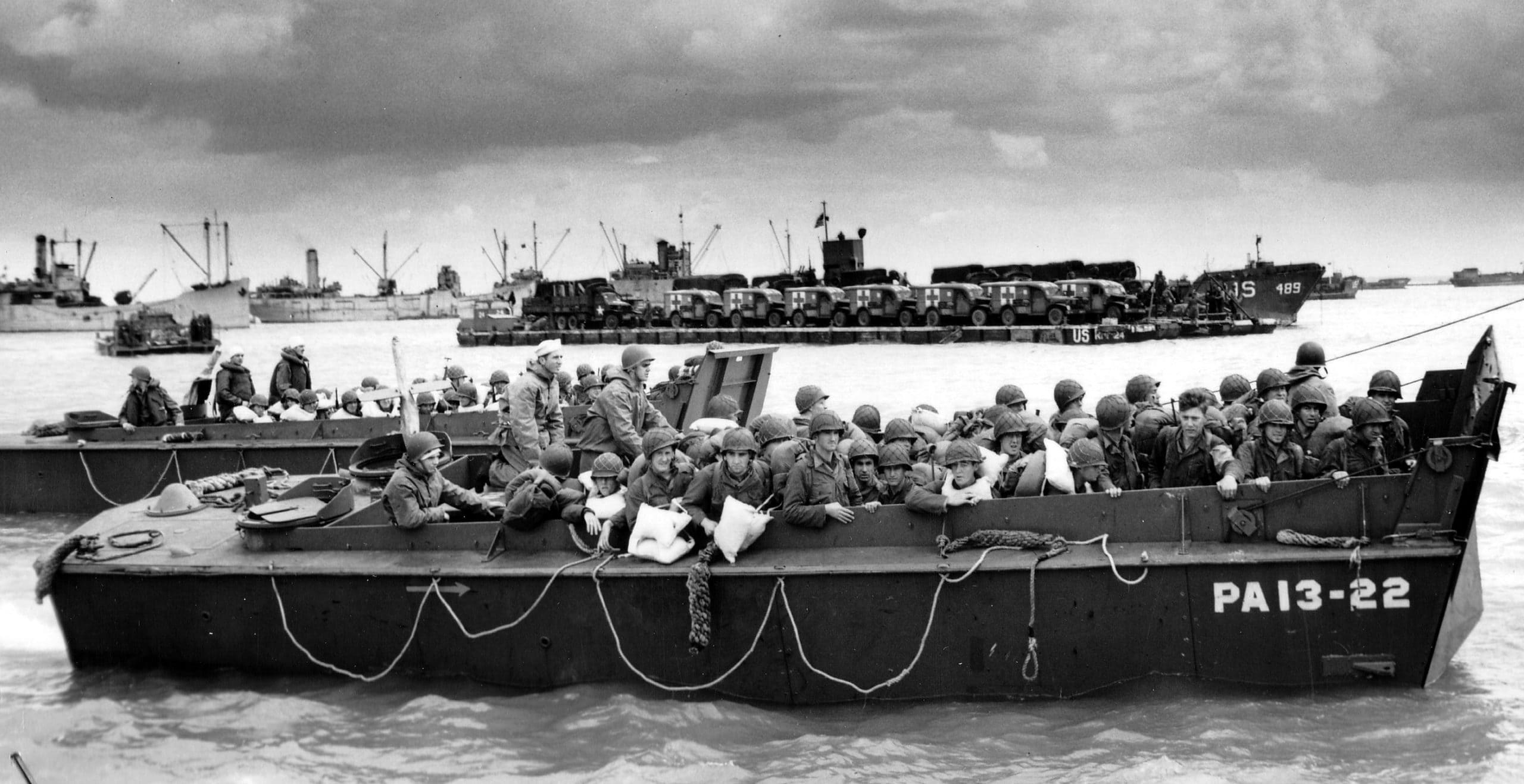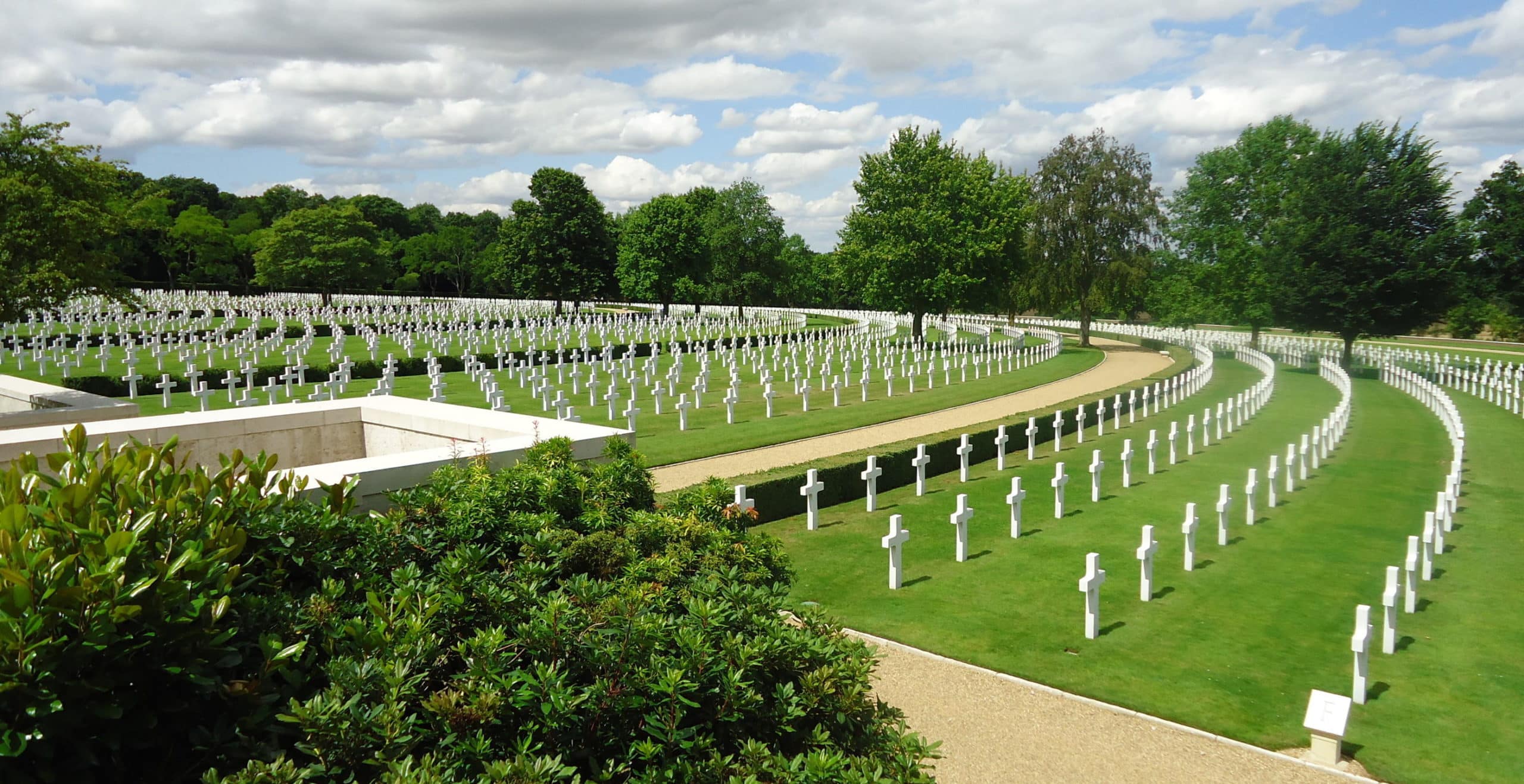The largest amphibious landing and one of the most important battles in modern history was the invasion of Normandy in France on 6th June 1944. The aim was to free north-west Europe from Nazi occupation.
Why is it known as D Day? The D actually stands for ‘day’ and the term D Day is used for the start of any large operation, however it has now become synonymous with 6th June 1944.
The operation was planned in 1943 and in December of that year, the American General Dwight D. Eisenhower led a team to plan the naval, air and land operations. To prepare for the invasion, British factories ramped up production and by mid 1944 had produced 9 million tonnes of supplies. Over 1.4 million American servicemen and a substantial Canadian contingent arrived in England during 1943 and 1944 to take part in the operation.

Successful Allied deception campaigns had managed to convince the Germans that the main invasion force would land elsewhere, and so German reinforcements were tied up away from Normandy.
Delayed by 24 hours by unseasonable weather, the landings were preceeded by a huge airborne assault involving some 24,000 troops, dropped behind enemy lines to seize strategic towns, bridges roads and other military objectives. They had taken off from airfields all over the south of England, shortly after midnight on 6th June.
One of the most famous divisions, the American 101st Airborne, took off from a small airfield at Upottery in the Blackdown Hills; their mission as part of Operation Neptune was to seize positions west of Utah Beach. The small museum at Upottery is set in a Nissan hut and includes memorabilia from D Day, as well as letters from the cast of the TV miniseries ‘Band of Brothers’ which was based on the experiences of Easy Company of the 101st.

The complex and coordinated operation, code named Overlord, also included members of the French Resistance being mobilised to sabotage railways, cut telephone wires and so on.
Drawn from 8 different navies, the main invasion force consisted of over 6,000 ships, landing craft and naval vessels. It was supported by over 11,000 aircraft taking off from various airfields all along the south coast of England. More than 150,000 Allied troops made the crossing.
They were making their way to Normandy and a 50 mile stretch of coast, divided up into five landing zones: code names Gold and Sword were British objectives, Juno (Canadian), and Omaha and Utah (American objectives).

All were assaulted on 6th June, supported by fire from destroyers off the beach. Good progress was made on the three British beaches and they were able to press on inland. However the Americans faced more resistance, particularly on Omaha beach where horrific loses were suffered, with around 2,000 men killed or wounded within the first few hours, one unit losing 90% of its men. Omaha was not taken completely till D Day+3 and it wasn’t until June 12th that all five beaches were successfully linked up.
Mulberry harbours were towed across the Channel on 9th June to allow for the disembarkation of vehicles, troops and supplies, as the German forces had destroyed many of the harbours. These ingenious structures came in 400 component parts to be assembled in situ off Omaha and Gold beaches. Remnants of the mulberry harbour off shore at Arromanches on Gold Beach can still be seen today.
Over 150,000 troops landed in Normandy on D Day and by June 15th the total was over half a million. However the invasion came at great cost: on D Day itself there were more than 12,000 casualties. More than 200,000 Allied soldiers would lose their lives or be wounded by the end of Operation Overlord.
Published: June 4th, 2021.









